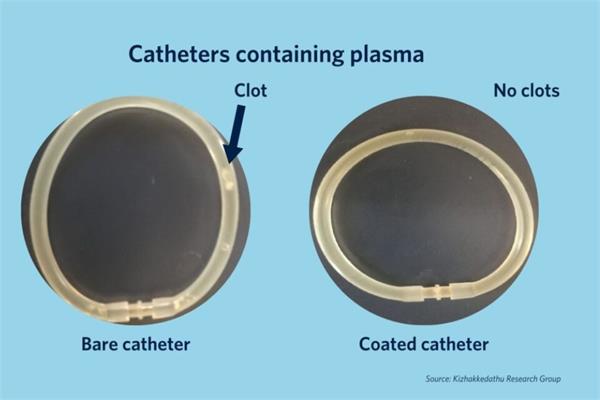
The new coating is designed to mimic the natural behaviour of blood vessels and could potentially allow for safer use of blood-contacting devices.
Researchers from the University of British Columbia (Canada) have recently developed a groundbreaking coating that could make medical devices safer for millions of patients – thus reducing the risks associated with blood clots and dangerous bleeding.
The new material, designed to mimic the natural behaviour of blood vessels, could allow for safer use of blood-contacting devices like catheters, stents, blood-oxygenation machines, and dialysis machine, especially in cases where blood clots are a significant concern.
“This discovery could be a transformative step in the development of safer medical devices. By designing a coating that mimics the body’s natural approach to preventing clots, we’ve created a solution that could dramatically reduce the need for risky blood thinners before and after patients use these devices,” has stated Jayachandran Kizhakkedathu, a professor of pathology and laboratory medicine who led the study.
Thrombosis is a major challenge with blood-contacting devices, as they can trigger clotting, leading to device blockage or severe complications like stroke or heart attack. While blood thinners are often prescribed to prevent clots, they increase the risk of dangerous bleeding. A newly developed coating offers a promising solution by mimicking blood vessels, promoting normal blood flow, and preventing clot formation. It acts as a "soft barrier" on the device, attracting a key blood protein without triggering clotting.
“By interacting with this protein in a controlled way, the coating prevents it from sparking a cascade of events that lead to clot formation. In lab and animal studies, the coating demonstrated significant reductions in clot formation on device surfaces, without the use of blood thinners and without affecting the normal clotting functions elsewhere in the body,” has added Haifeng Ji, first author of the study.
This innovation comes as the demand for blood-contacting devices rises, with millions of vascular catheters used each year and many patients depending on devices like dialysis machines. The research team aims to optimise the coating for a broader range of devices and explore how it interacts with blood proteins and cells. They also seek to determine if the coating could help prevent other complications, such as inflammation or infection, in long-term implants. Future studies could lead to medical devices that prevent clotting while better integrating with the body’s natural processes.
“One of the most surprising insights was that controlling the interaction between the coating and specific blood proteins could prevent clotting without disrupting the body’s natural balance. This shows us that mimicking the body’s own mechanisms, rather than simply repelling blood components, is key to truly biocompatible device design,” has concluded Jayachandran Kizhakkedathu.